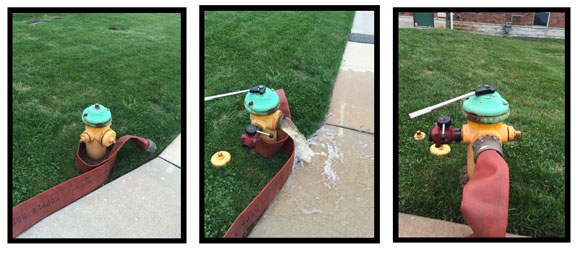
By Brian Zaitz
You are arriving second due; the first company arrives to a working fire and you are tasked with catching the hydrant and establishing a water supply.
This is a task that almost every engine officer, driver, and firefighter has conducted in his or her career with little thought about the actual activity. Although many will argue that you need an engine at the plug and many will argue to lay in from the hydrant, this article is not meant to debate that tactical decision–this is about establishing a water supply and allowing for options off the hydrant.
If you decide to lay in, it is important to loop the hydrant with sufficient hose to make the connection and physical weight to allow the truck to proceed to the scene. While the truck is proceeding or prior to making the connection to the engine at the plug, remove the steamer and one side of the 2 ½-inch connection. Why remove the 2 ½-inch connection? This is for a ball valve connection–again, it may never be used, but it allows for the option of a 3-inch supply line or bleeding the 5-inch line if needed during the operation. It is a simple step that provides additional options on the fireground.
After connecting, flush the hydrant to remove any debris that may be in the hydrant. Many may not find this a necessary step as it takes time, however if you end up with debris in your pump or, worse yet, it works through the pump into your line and clogs your nozzle, you will wish someone would have taken the time to flush the hydrant!
With practice, this entire procedure can be a quick process that becomes the norm instead of an outlier. After flushing, make your large-diameter hose connection and await the call for water. Once the call is made, open the line; chase the line to the fire scene, checking for kinks and moving it to the side of the road; and reestablish with your crew or in accordance with your preferred operating method.
This simple activity is considered a routine activity on almost every working fire. Usually it is an afterthought and never discussed, however building in these few critical steps will allow safer operations with more options as the scene potentially escalates.
Download this drill as a PDF HERE (249 KB).
Brian Zaitz is a 14-year student of the fire service, currently assigned as the captain/training officer with the Metro West (MO) Fire Protection District. Brian is an instructor with Engine House Training, LLC as well as instructor at the St. Louis County Fire Academy. Brian holds several degrees, including an associates in paramedic technology, a bachelors in fire science management, and a masters in human resource development. Brian is currently and accredited chief training officer and student of the National Fire Academy’s Executive Fire Officer Program.
MORE THROW BACK TO BASICS
- Forcible Entry for the Lone Firefighter
- Forcible Entry: Inward-Swinging Door
- Hoselines
- Ladder Locks
- Buddy Breathing
RELATED FIREFIGHTER TRAINING


